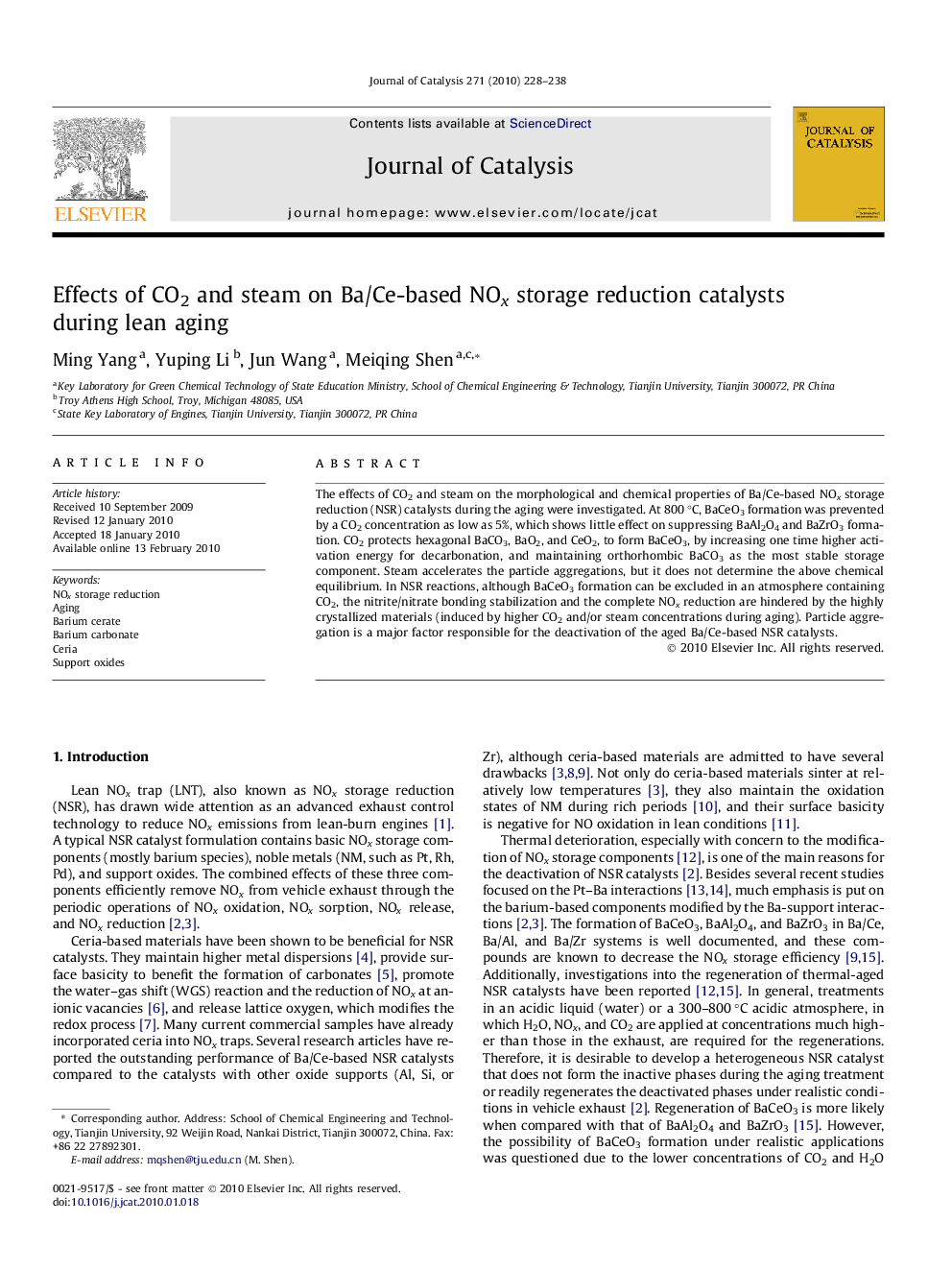| Article ID | Journal | Published Year | Pages | File Type |
|---|---|---|---|---|
| 61778 | Journal of Catalysis | 2010 | 11 Pages |
The effects of CO2 and steam on the morphological and chemical properties of Ba/Ce-based NOx storage reduction (NSR) catalysts during the aging were investigated. At 800 °C, BaCeO3 formation was prevented by a CO2 concentration as low as 5%, which shows little effect on suppressing BaAl2O4 and BaZrO3 formation. CO2 protects hexagonal BaCO3, BaO2, and CeO2, to form BaCeO3, by increasing one time higher activation energy for decarbonation, and maintaining orthorhombic BaCO3 as the most stable storage component. Steam accelerates the particle aggregations, but it does not determine the above chemical equilibrium. In NSR reactions, although BaCeO3 formation can be excluded in an atmosphere containing CO2, the nitrite/nitrate bonding stabilization and the complete NOx reduction are hindered by the highly crystallized materials (induced by higher CO2 and/or steam concentrations during aging). Particle aggregation is a major factor responsible for the deactivation of the aged Ba/Ce-based NSR catalysts.
Graphical abstractNOx storage/reduction catalysts based on barium and cerium oxides were treated under different aging atmospheres to reveal the effects of CO2 and steam on the chemical and morphological properties of the materials.Figure optionsDownload full-size imageDownload high-quality image (124 K)Download as PowerPoint slide
